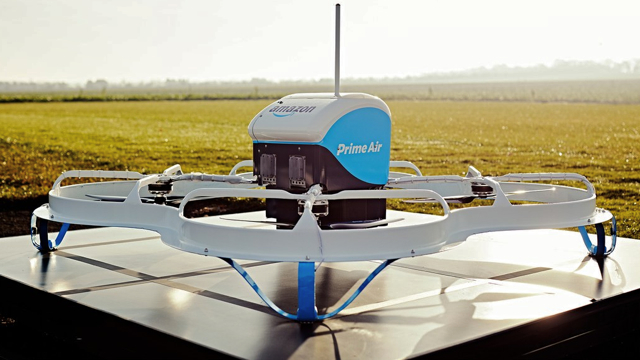Panel Weighs Possibility of a Single Global Drone Regulation
January 7, 2017
A CES 2017 panel on drones and regulation, led by CTA vice president of tech policy Doug Johnson, brought together representatives from the U.S., U.K., Mexico and Singapore. By the time the session was over, Jaime Reyes Robles, secretary of innovation, science and technology for the state of Jalisco in Mexico, had exchanged cards and the possibility for meetings with Federal Aviation Administration’s Marke “Hoot” Gibson and Amazon vice president for global innovation policy and communications Paul Misener.
Also on hand was Matt Hancock, U.K. minister of state for digital and culture, and Jessie Mooberry, who is chief operating officer of SwarmX, a drone startup in Singapore. Amazon has conducted its first trials of Prime Air, its drone delivery service, in the U.K., something Hancock is proud of.
“We are working on making U.K. a great place to innovate with drones, taking into account safety and privacy,” he said. He believes “a good strong regulatory structure, coordinated across the world and articulated well, can be helpful in the development of new technology.”
That’s a point of view that all the panelists agreed with, including Amazon’s Misener, since Prime Air is intended to become global. “It’s certainly desirable to have a degree of uniformity globally,” he said. “If the U.S. and Europe had some differences, that’s okay. But if Belgium had a rule that France didn’t, or Texas had a rule that Arkansas didn’t, that would be a problem. A proliferation of state bills could affect the ability of entrepreneurs to do business across borders.”
Mooberry has experienced just that. Although Singapore has been a wonderful place to found her startup, she says, with access to capital, and tremendous government cooperation and efficiency, deploying drones in other countries can be challenging.
“If we knew what those countries’ regulations were, we could plan and design our drones to take that into consideration,” she said. “If we had a permission that was valid internationally rather than just one locale, it would make our lives easier and you’d see more innovation and democratization.”
In Jalisco, Reyes is working to transform the state. “My objective is to convert Jalisco to make it a technology hub,” he said. His obstacles are not simply a slow, bureaucratic government but bad players, such as drug traffickers, who want to misuse drone technology. “We have a very valuable entrepreneurship environment,” said Reyes. “With regard to policy, I’d like to work with the U.K. as well as the U.S. And of course Amazon is welcome.”
The FAA’s Gibson notes the agency has come a long way. “We’re positioned better,” he said. “We need academia, regulations, industry to get there together. We need a collaborative environment with other countries.” Gibson says they are involved in “a number of bilateral international discussions” going on all the time with regard to drones.
Misener notes the role Amazon plays. “The things we learn how to do physically around the world can be applied around the world,” he said, noting the importance of the FAA’s project with NASA to develop rules for low altitude flying.
Hancock notes other benefits from a regulation that would be largely the same across international borders. “If we set good consistent regulations internationally, then manufacturers can put some of these safety features into the drones,” he said. “If you’re going to use drones the world over, it’s to the benefit of everyone to make sure that collaboration involves regulators, industry and other stakeholders representing the average citizen.”


No Comments Yet
You can be the first to comment!
Sorry, comments for this entry are closed at this time.